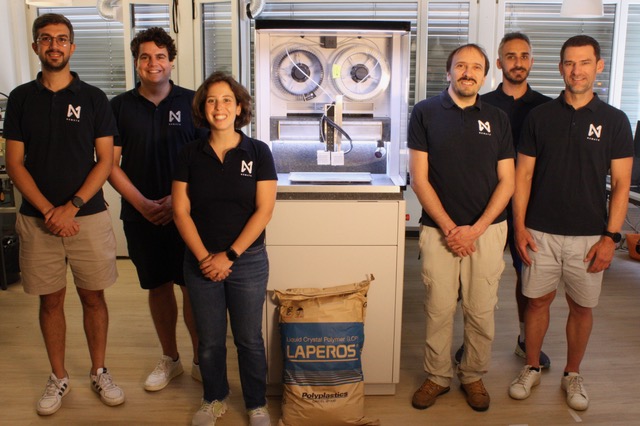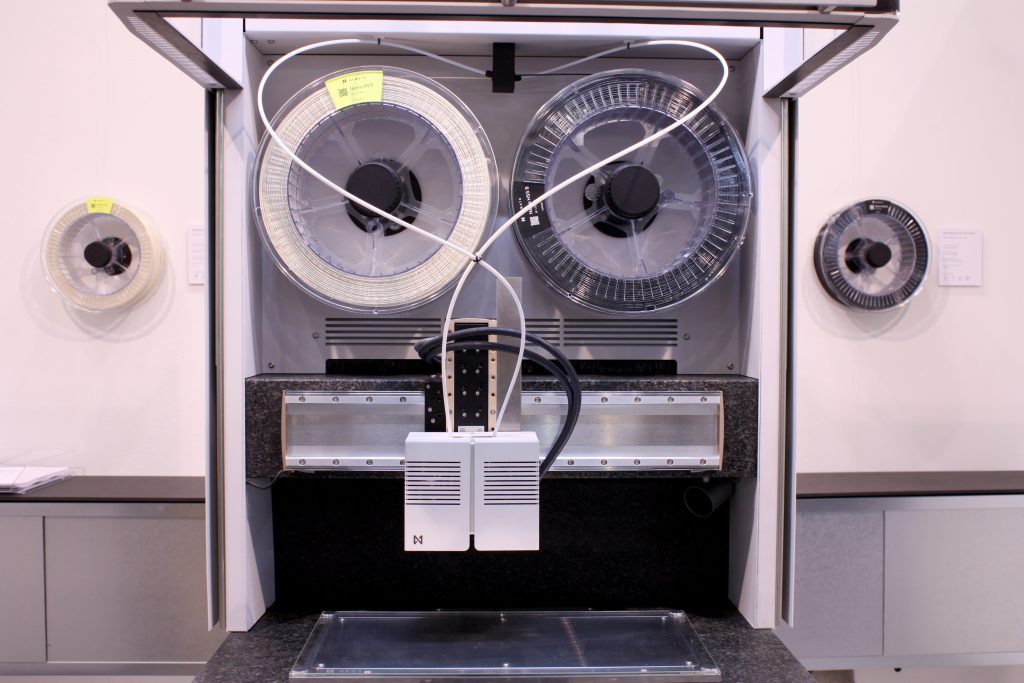Join the Expert Committee for the 2024 3D Printing Industry Awards to help select the winners!
High-performance engineering plastics provider Polyplastics has invested in NematX, an ETH Zurich spin-off, to expand the use of 3D printed high-performance polymer components across various industries.
According to NematX, both R&D teams will collaborate to develop next-generation 3D printing materials. They will synchronize manufacturing processes with the NEX 01 high-precision material extrusion platform, resulting in 3D printed components with improved precision and robust production capabilities suitable for industrial manufacturing.
Silvan Gantenbein, CTO and Co-Founder of NematX said, “Being able to expand our long-standing supplier and material development partnership with Polyplastics as a leading global supplier of high-performance plastic materials is of high significance for NematX.”

High-precision 3D printing and sustainable manufacturing
In this joint effort, Polyplastics, with over 60 years of experience in engineering plastics, will collaborate with NematX’s advanced digital manufacturing technologies. This alliance seeks to develop innovative, high-quality polymer varieties and bespoke 3D printing techniques, meeting stringent quality standards for components in challenging industries.
Moreover, this collaboration allows NematX to leverage Polyplastics’ extensive experience with polymers to refine 3D printing resolution, heat resistance, and overall material performance. This company can also further advance the precision of its 3D printing solutions and expand its technological capabilities.
The Swiss-Japanese partnership will also focus on broadening the global reach of NematX’s NEX 01, a high-precision material extrusion platform launched in 2020. This printer is designed for high-throughput production with micron-resolution capabilities. Compatible with Liquid Crystal Polymers (LCPs), the printer enables parts with enhanced mechanical, thermal, and chemical properties.
It features advanced motion control, rapid build plate exchange, and integrated process monitoring. NematX’s LCP 3D printing offers solutions for the semiconductor, mobility, and healthcare sectors, delivering parts with quality comparable to CNC milling or injection molding. On another note, NematX gained industry recognition by winning the Formnext Start-up Challenge and has since started marketing its LCP filaments.
Additionally, this investment is poised to enhance sustainability in manufacturing by fostering the development of eco-friendly materials and processes, aiming to reduce waste and resource consumption.

Developments in polymer 3D printing
Apart from NematX and Polyplastics, other companies have also explored 3D printing with polymers. For instance, the POLYLINE project successfully created an automated large-scale additive manufacturing line for polymer parts.
Completed over three years at BMW’s Additive Manufacturing Campus, this project, involving BMW, DyeMansion, EOS, and Grenzebach, sough to advance high-throughput 3D printing for serial production. Funded by the German Federal Ministry of Education and Research with €10.7 million, the project integrated next-generation digitalized production and highlights the potential for fully automated 3D printing factories, as noted by project leaders.
As a part of their research efforts, Karlsruhe Institute of Technology (KIT) researchers developed a method for 3D printing nanoporous polymers with complex geometries. By combining Digital Light Processing (DLP) and polymerization-induced phase separation (PIPS), the team produced structures from 100 μm to several centimeters with controlled nanoporosity.
According to the team, this technique improved adsorption, catalysis, and biomedical applications. The method enables the creation of intricate shapes and could lead to advancements in lightweight materials.
Elsewhere, Mosaic Manufacturing announced the commercial availability of its Array polymer 3D printers, fully automated systems for industrial use featuring bed changeover and AI-powered monitoring. Alongside Array, the company also announced the shipment of its Element and Element HT 3D printers.
Priced from $79,999, the Array unit includes four Element or Element HT systems and aims to enhance production scalability and reduce costs. In addition, Mosaic’s Canvas Edu platform supports educational institutions with 3D printing management.
What 3D printing trends do the industry leaders anticipate this year?
What does the Future of 3D printing hold for the next 10 years?
To stay up to date with the latest 3D printing news, don’t forget to subscribe to the 3D Printing Industry newsletter or follow us on Twitter, or like our page on Facebook.
While you’re here, why not subscribe to our Youtube channel? Featuring discussion, debriefs, video shorts, and webinar replays.
Featured image shows the NEMATX team. Photo via NematX.



